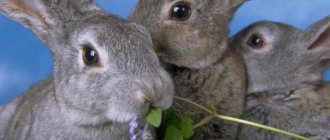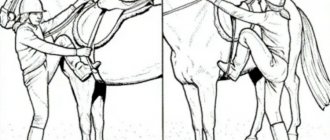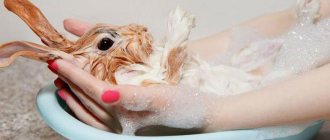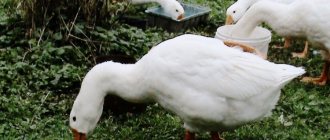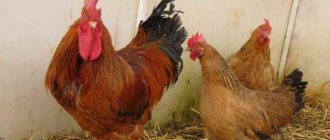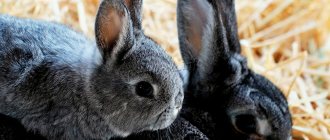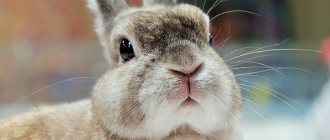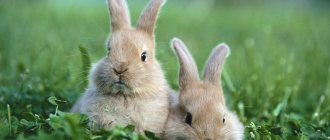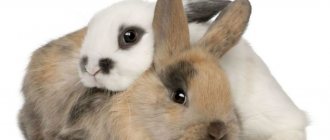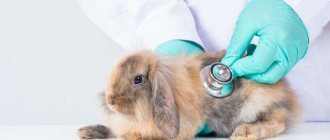Is it safe to walk a rabbit on a leash?
The veterinarian says that owners can safely walk their rabbit outside using a leash or harness. The belt is simply an indispensable device if you want to take your pet for a walk on the green lawn. This is a great tool to give your pet freedom without letting him run away.
You should avoid walking your pet in an area where there may be other rabbits to avoid contracting a dangerous disease such as hemorrhagic disease from them. This is a dangerous infection that requires urgent attention to a veterinarian.
Feeding rabbits during wintering
Usually the animals’ diet is the same as in the summer, that is, a grain mixture, mixed feed, and the like, but it is necessary to give rabbits more vitamins and minerals in winter. Experienced rabbit breeders advise using young branches of trees such as apple, pear, pine, alder, and oak for this purpose. The branches of such trees contain all the microelements and vitamins necessary for rabbits. In addition, they promote proper digestion. In addition to the branches, give fresh root vegetables in small quantities (so that they do not have time to freeze) - fodder beets, raw potatoes, carrots, if possible, etc.
As for water. A plastic bucket is placed in the cage, and then the water in it naturally freezes. Then place the bucket in hot water for a minute. The ice will melt a little, take it out of the ice bucket and put this block in the cage. The rabbit, being a rodent, accordingly starts gnawing on this piece of ice, thereby satisfying its needs for water.
Is it possible to potty train a rabbit?
The veterinarian says that it is quite easy to potty train a rabbit using a pet tray. Rabbits are clean animals, so they tend to keep their cage clean and only go to the toilet in one corner. The easiest thing you can do is just put the tray in this corner. Animals will know that this is where they need to go to the toilet.
Do not brush after acidic foods: a dentist on a common mistake in dental care
The secret to the lush flowering of royal pelargonium: it’s all about the correct pinching
Cocoa stimulates the brain, but you'll have to eat 10 bars to see results.
Additionally, neutering or spaying a rabbit is a critical part of potty training because an unspayed rabbit will periodically have the urge to mark its territory by urinating in different places.
Winter breeding of rabbits
Thick fur protects from the cold - representatives of downy breeds are best adapted to winter conditions.
Pregnant females are moved together with their cage to a greenhouse in winter. The main attention is paid to maintaining ideal cleanliness in the queen cell and ventilation of the home.
The air temperature while the female is bearing offspring is maintained at a level not lower than 5 °C. If the premises are insufficiently clean, cold and poorly ventilated, the rabbits do not care for their babies well.
Breeding pets in winter allows you to count on getting strong and hardy offspring. Proper care ensures the cultivation of strong, fertile individuals that quickly gain weight and have good fur.
Is it possible to mate rabbits in winter?
To mate individuals in the cold season, the following conditions must be met:
- The owners select females that have previously given birth. Female rabbits must be in good health. Young individuals who have not been bred before experience difficulties in bearing offspring and caring for them in winter.
- Mating is carried out in insulated rooms. The procedure is performed on days when severe frosts are not observed.
- Shortly before birth, the queen cell is disinfected. When the baby rabbits are born, they are moved to a box where a nest is prepared in advance.
Attention! Often holding young animals in your arms after birth is not recommended, otherwise the female may not recognize the smell of the young and destroy the offspring.
Winter birth, what temperature do newborn rabbits need?
In order for the rabbits to remain viable and healthy, the owner should take care to maintain the room temperature at least 35 °C.
It is important to ensure that the female does not leave the offspring for a long time. The mother rabbit should feed her cubs at least 2 times a day.
Should you bathe your pet regularly?
Even though rabbits love to dig in the dirt, they don't need to be bathed often. From taking baths they can catch a cold, suffer from respiratory infections, pneumonia, hypothermia and many other life-threatening conditions. Plus, they can panic while bathing, which can cause spinal damage.
If you need to clean dirt from your rabbit's fur, it is important to try to use as little water as possible. Veterinarians say that it is best to wipe the fur with a damp cloth or simply wash the contaminated area.
Comparing people who are not similar makes police assessments more accurate
How to celebrate Chinese New Year to live in abundance: Volkova’s advice
Beware of the Harpies: a “black” horoscope that reveals the dark sides of people
Walking your rabbit in the fresh air is the key to good animal health.
Today there are several dozen breeds of decorative rabbits in the world. The best and most common of them are:
- Hermelinas;
- Dwarf Rex;
- Dwarf Rams;
- Fox rabbits.
Dwarf rabbits are ideal pets to keep indoors.
- Hermelines. The peculiarity of this breed is small straight ears, white coat color, red or blue eyes. Short legs, short neck. The average weight of a mature Hermelin rabbit is 1 kg. As a rule, rabbits of this breed are very calm and friendly to their owners.
- Rex. A distinctive feature of the breed is its very short and thick coat. To the touch, such an animal looks like a plush toy. More than a dozen colors of this breed have been registered. There are also colors that are not included in the breed standard, but are still popular among rabbit breeders. The weight of an adult dwarf Rex is from 1 to 1.5 kg. Rex's character is not entirely flexible. It is advisable to accustom them to the hands and owner from a young age.
- Dwarf rams. Like their larger ram counterparts, the main characteristic of the breed is drooping ears. At birth, rabbits are born with straight ears, but closer to the age of one month, the ears begin to droop. A large number of colors of this breed are also registered. Rabbits have normal fur length, but very long and floppy ears. Among dwarf breeds they are considered the largest and can reach a weight of up to 2.5 kg. The character of dwarf rams is very friendly.
- Foxes. The breed has very long fur, the length of their fur is similar to Angora downy rabbits. The ears are erect and of medium length. The average weight of an adult rabbit is about 1 kg. This breed is a little demanding to care for; they need to be combed or trimmed, otherwise the long hair may get tangled and the rabbit will have an unkempt appearance.
Without being able to organize keeping the rabbit in an enclosure, the animal should be given the opportunity to be in the fresh air. You need to carefully prepare for such walks and choose the optimal place where you can walk with your pet.
The site must meet the following requirements:
- Do not have the droppings of other animals (this is a source of various infectious diseases)
- There are no rubble or piles that the rabbit can climb into.
- There should be no other animals on the site, especially large dogs or cats.
- There is no opportunity for wild predators to attack the rabbit
The optimal place for a decorative rabbit to walk in the fresh air will be a meadow with short grass, in which the rabbit cannot hide from you. The animal must be accustomed to such walks gradually, starting from 5 minutes a day. Then, you can gradually increase the walking time. A rabbit needs 30 minutes of daily walks for normal growth and development.
Use a leash when walking your rabbit outside
In winter, you should not avoid walking your animal in the fresh air. Walking an animal in winter is just as beneficial as at any other time of the year. The idea that a rabbit can freeze is wrong. For example, Rex rabbits, with the shortest fur among rabbits, can easily withstand frost of minus 30 degrees. WITH.
If you want to keep rabbits, then you will definitely have a question about which breed to choose. Many different species have been developed from the wild animal through targeted selection over many decades, the characteristics of which have been established through breeding and inbreeding.
Individual breeds are distinguished according to the following characteristics:
- Body weight: 1-9 kg (dwarf and small breeds, medium size, giants).
- Body type: slender, with elongated limbs, elongated, dense, with an arched back, cylindrical.
- Fur color: black, gray, bluish, brown, red, yellow, white.
- Fur color: uniform, spotted, with dots, with stripes.
- Hair: long, satin, normal, short.
In addition to these basic characteristics, the breeds differ in the density of fur, the formation of muscle tissue, feed conversion, early maturity, growth rate, fertility, milk production of females and, no less important, temperament.
Dwarf rabbit Decorative lop-eared Medium size Giant
If you plan to raise animals for meat, you will try to choose a larger species that also produces more fur. But it should be taken into account that for very large individuals the required amount of food and growth form an unfavorable ratio. Under certain conditions, a medium-sized breed can be more profitable.
Can you be allergic to rabbits?
Veterinarians said that there may be an allergy to the animal. Interestingly, most people have a reaction not to their pet's fur, but to a protein found in saliva and skin cells.
When you pet or touch a rabbit, it spreads this protein, which triggers allergies. If you suspect you may have a negative reaction, it is best to consult with your doctor to rule out any other causes.
Keeping rabbits in winter
There are three factors that the owner should not forget about: humidity, drafts and temperature changes. Humidity above 70% (and this happens in warm, slushy winters), drafty cages and jumps from frost to puddles can damage the health of pets. Remember that ill-conceived winter conditions lead to colds and weight loss.
On the street
As already mentioned, thirty-degree frosts are not scary for rabbits. This is facilitated, in particular, by good cell insulation.
The free space between the walls of the shed and the cages themselves is best filled with natural thermal insulation: dried leaves, straw, branches or moss. You can also use artificial material, for example, felt, but this is not economically viable and not environmentally friendly. The floor is laid with thick wooden boards to protect against freezing. In the cages, the mesh bottom is covered with a heap of straw. The more there is, the better: rabbits warm the straw with their breath, and the heat lasts for a long time.
Important! If possible, for better thermal insulation, rabbit houses can be raised on wooden poles 75-80 cm above the ground.
The outside of the cages is also insulated, and also sheathed with galvanized iron (sheets, overlapping). This prevents moisture from getting inside the houses when the snow melts or there are prolonged rains. When frosts reach alarming temperatures, you can cover the cages with quilted jackets and other warm things.
The so-called queen cells, that is, the cages in which nursing rabbits and small rabbits are kept, are arranged with special care. Female rabbits breed at temperatures of 20-25 degrees below zero, so for a successful birth they need relative warmth, light and access to fresh air. The cage is insulated with polystyrene foam or agro-canvas, avoiding gaps in the nest box. Thick cardboard or oranite is laid on the floor, and a thick layer of straw is spread on it.
It is best to place cells on the south side of buildings. If you place them in rows, with facades facing each other with a small functional passage, then, for example, you can make a common roof against the wind. It will also be convenient to install lighting.
We recommend reading how to keep rabbits in cages.
Transferring cells indoors
Severe frosts, as well as light frosts, but with high humidity, can make adjustments to the outdoor keeping of furry pets. If the owner sees that insulating rabbit cages and other measures do not save the animals from hypothermia, he can take the cages into a barn or any other unheated but closed room. The walls will reliably protect from the wind and smooth out the effects of frost.
You should not bring animals into the house. Firstly, sudden changes in temperature are even more dangerous for their bodies than cold. Secondly, they tolerate heat worse, and female rabbits may even stop feeding the young.
It is not worth placing rabbits with cattle, since stale air can injure them and even lead to death. Also, avoid noisy barns, as roosters, dogs barking and other noises can frighten rabbits, especially nursing mothers.
Did you know? The longest rabbit ears were included in the book of records straight from the USA - in Wichita in 2003 there lived a rabbit with ears 79 cm long!
Do rabbits really reproduce quickly?
This is not a myth. Rabbits are truly one of the fastest breeding animals in the world. On average, an animal reaches its sexual maturity at the age of 3 to 8 months. It is ready to mate almost all the time.
I always plant petunia in February: in the summer I show off the lush flower beds
Money Mule: Some Creative Online Dating Scams
Planet Nine at the edge of the solar system may not exist
Typically, the gestation period is approximately 30 days. This means that it is technically possible for rabbits to give birth to up to 12 litters per year.
How to care for decorative rabbits at home
To keep the cage clean and fresh, it is necessary to clean and disinfect. Rabbits are very clean animals, but they still have a specific smell. Unfortunately, it will not be possible to completely eradicate it, you can only muffle it. To do this, you need to clean the enclosure as often as possible. Complete cleaning should be done 2-3 times a week.
The contents of the tray, water and food should be changed daily. If we talk about “general” cleaning of the cell, it is carried out using special antibacterial agents. Rinse every corner thoroughly so that there is no dirt or residue left anywhere. When using various chemicals, the animal should be moved to another place. Make sure that the flooring is always dry, as wet sawdust can cause a lot of diseases, especially problems with the digestive system.
When purchasing a decorative rabbit for your home, be sure to decide on the design of the cage and the place where it will be installed before purchasing. You can also make a cage for a decorative rabbit yourself. When deciding on the design of the cell, it is necessary to take into account the following:
- The cage should be easy to clean
- Have sufficient space for the normal growth and development of the pet
- The design of the cage must be safe for the animal
If the pet will not have the opportunity to walk around the apartment, the cage should be very spacious. In their natural habitat, rabbits move around a lot. The floor area must be at least 0.5 square meters. for one pet. To keep two rabbits in one cage at the same time, you need a cage that is 40-60% larger. The height of the cage must be at least 35 cm.
A cage design with a mesh or slatted floor is suitable. This cage is much more convenient and quicker to clean.
- The walls should be made of material that the animal cannot chew. Should not have coatings made of polymeric materials or paint coatings. The ideal option would be a galvanized metal mesh or rod.
- The cage must be equipped with a hay bark raised from the floor surface by at least 10 cm, and have a feeder made of materials that the rabbit cannot chew. And have a drinking bowl. A nipple drinker would be a good option.
- Feeders, drinkers and hay in the cage must be securely fixed and it is advisable to have a design that prevents the rabbit from getting into the food.
We suggest you familiarize yourself with: Decorative pig breed cost
It is recommended to clean the cage as it gets dirty. The frequency of cleaning often depends on the design and size of the cage, as well as on the number of rabbits that live in it. But it is advisable to clean the cage at least once a week to prevent the accumulation of unpleasant odors in the room where the cage is installed.
For lovers of decorative animals, the dwarf breed of rabbits is perfect. They are adorable creatures that will bring you a lot of fun. The first dwarf rabbit breed was the ermine.
Breed "ermine"
She was bred from a pure white, red-eyed, very small Polish rabbit that had very good quality fur. Due to continuous inbreeding, only this one form has developed mutations - sudden changes at the genetic level. A special “dwarf growth gene” appeared.
One of the types of dwarf animals is the lop-eared rabbit. Because of its appearance it is also called a ram. Rabbits are often adopted by people who are wary of getting a dog or cat. Caring for lop-eared rabbits at home will not present much trouble, as will feeding them. Like any animal, it requires proper treatment and feeding.
Therefore, before buying a creature, find out how to care for domestic rabbits, because the health and well-being of a pet depends entirely on the conditions that you create for it. The dwarf lop-eared rabbit will reciprocate love and affection and become a full-fledged member of the family.
Raising and caring for rabbits at home requires careful and serious work. But if you do it right, you will get great results.
Do each personality have distinctive characteristics?
Experts say that there is a certain difference between the behavior of rabbits and their preferences. Breed has the greatest influence on your pet's personality and character. The larger the rabbit, the calmer it will be.
Veterinarians also say that males tend to be calmer and more relaxed than females. Pets who have not been neutered or spayed will experience a fairly strong sex drive.
Do I need to trim my rabbit's claws?
Wild rabbits are generally so active that their nails become short due to natural wear and tear, but the vast majority of pets require a veterinarian to regularly manicure them with special nail clippers.
In general, animals need to have their nails trimmed every 2-3 months. This will prevent the nails from becoming too long. But you may need to trim your nails much more frequently, so it's important to check your pet's paws regularly.
“Sputnik V” and “Epivaccorona” are recognized as effective against the “British” strain
It’s not too early and not too late: when to plant tomatoes as seedlings for greenhouses and soil
A simple remedy available in pharmacies will help you regain your charm after Covid.
What temperature can rabbits withstand in winter?
It is believed that the ancestors of modern furry animals originally lived in the warm climate of the Mediterranean. Later, wild rabbits were made domesticated and distributed throughout the world. Animals gradually got used to other climatic conditions, winters. Selection helped to obtain a set of necessary qualities.
Today, common breeds do well in sub-zero temperatures. Tolerance to cold varies between breeds. Although none of them can withstand the classic Russian winter without human help.
Downy breeds are better adapted to cold weather. Meat cats also have a thick undercoat, but it is shorter. For example, the following breeds feel better in winter:
- white, gray giant;
- chinchilla;
- butterfly.
Gray giant
White giant
Chinchilla
Butterfly
Comfortable temperature for rabbits ranges from 10–20 ℃. Animals accustomed to the local winter live well at -5 ℃ and even -10 ℃. They are not afraid of a short-term drop to -17 ℃. However, sub-zero temperatures are allowed only under two conditions:
- when there are no drafts in winter cages for rabbits;
- with heavy feeding.
Animals survive in winter even at -30 ℃, but not for long. Without human intervention, they will suffer frostbite and death. Already at -15 ℃ sexual activity is seriously reduced. When the temperature drops to -25 ℃, the hunt ends - female rabbits stop estrus, males are not interested in the opposite sex.
For childbirth, the best mode is from +6 ℃ to +20 ℃. Features depend on the breed. For the first two weeks, rabbits require about +39 ℃. This is the mother's body temperature. When it decreases, newborns are already freezing. Disorders occur in the body that lead to death.
If you plan to give birth in winter, you can’t do without insulation. You should not test the health of animals to the limit. The warmer it is in winter, the better it is for the animals. The harmful effects of cold manifest themselves as follows:
- pets lose energy, so the amount of meat decreases;
- fewer offspring are born;
- the weight of the cubs drops by about 10%, they get sick more often;
- disorders are more common in females - miscarriages, infertility, milk deficiency.
Should a rabbit be spayed?
Even if there is only one rabbit living at home, it is necessary to sterilize it in order to avoid various health risks. All pets should be neutered as this helps reduce the risk of ovarian cancer, which is very high in non-neutered animals. This also reduces their aggressive behavior.
It is recommended that rabbits be neutered or spayed between 4 and 6 months of age.
Breeds of decorative rabbits
It is easy to get confused when choosing a decorative rabbit, since there are different breeds of these animals. Their varieties are so beautiful that you want them all at once, but the choice must be made correctly, based on the characteristics of the breeds and the conditions that you can provide to the decorative rabbit when keeping it in an apartment. Let's look at several breeds of long-eared domestic rodents:
- Fold-eared ram - has a calm character and long hanging ears. This breed of rabbit is the most popular among rodent lovers, both for its appearance and for its good disposition;
- Colored dwarfs - have short, shiny fur and cute little ears;
- Angora dwarf rabbits - these beauties have luxurious long (up to 20 cm) fur. Naturally, such pets will require their owners to carefully care for their long fur;
- Hermelins have extremely dense wool, which is why they cannot tolerate overheating. Elevated temperatures in the apartment can lead to heat stroke and even the death of a furry animal. Representatives of this breed have a difficult character, so they are not recommended for novice rabbit breeders. It is also worth noting that Hermelins are very, very lazy and do not like to lead an active lifestyle;
- Rex are rabbits that have beautiful plush fur, you just want to touch them again and again.
Hermelin.
Whatever breed of decorative domestic rabbit you choose, the main thing is to properly care for and love your eared pet.
Can two rabbits live in the same cage?
Animals can live quite normally together in the same cage. Some of them even prefer to have a neighbor. You just need to make sure that the cage is big enough for both pets.
Rabbits that have not been neutered should generally not be kept together as this may result in unwanted offspring or conflict. It is worth noting that these animals do not like to share territory too much, so the process of establishing mutual understanding can take quite a lot of time and sometimes this leads to a fight.
Obesity in rabbits
Obese rabbit Obese rabbits
reduce the reproductive capacity of males and females. There is no birth rate. This means that you can’t count on future replenishment in the coming months. Pregnant females and young rabbits tolerate frost very hard. Frostbite in various parts of the body during this period is not that uncommon in rabbits. The risk of colds due to hypothermia cannot even be ruled out. It's not that easy to deal with. However, despite all these difficulties, in practice things are not so bad if you approach the issue of wintering rabbits correctly. From personal experience and from the experience of colleagues, we can say that there are many successful examples when rabbits, being outside in cages in winter even at a temperature of -30 degrees, felt good, multiplied and produced offspring.
